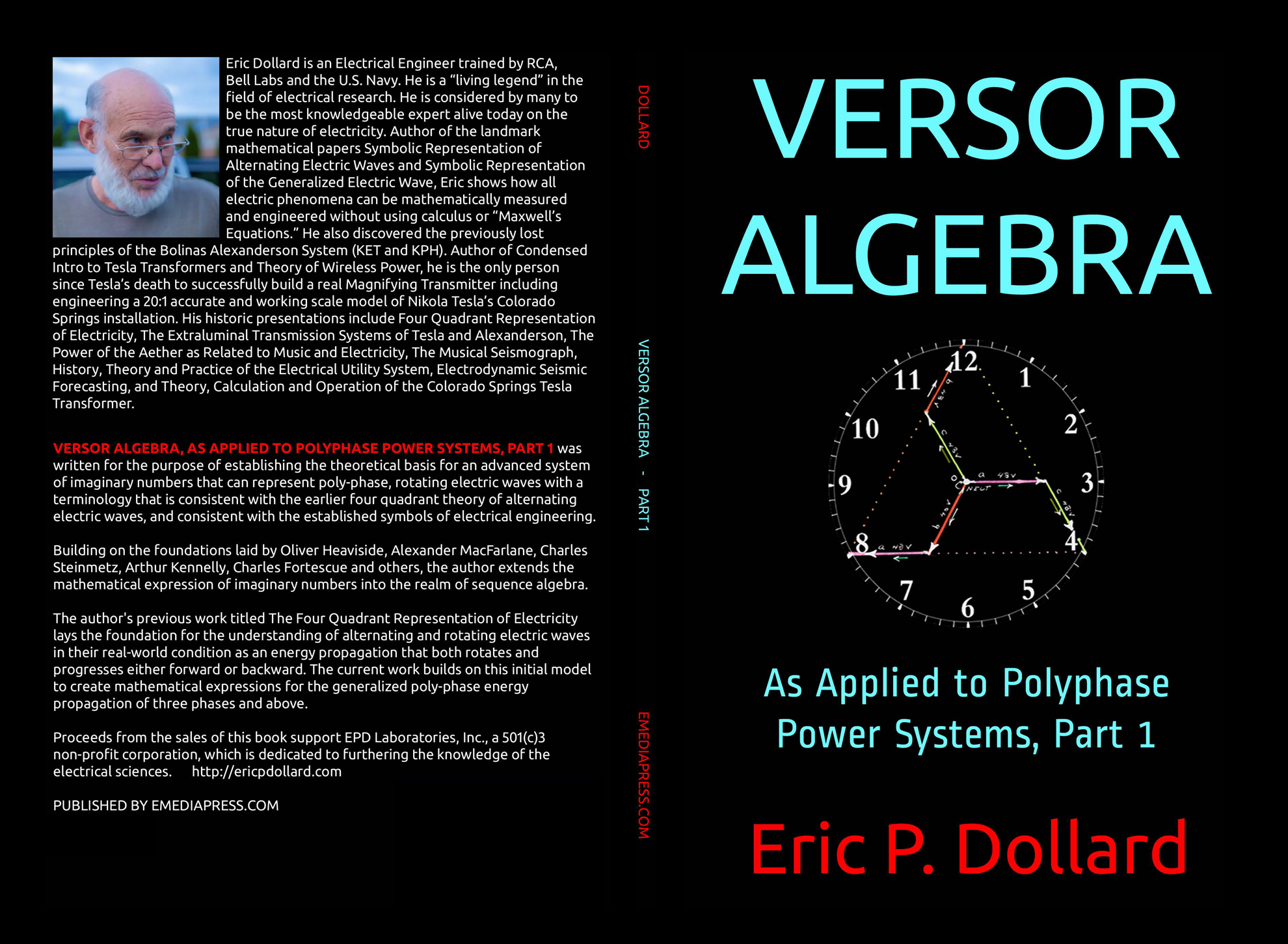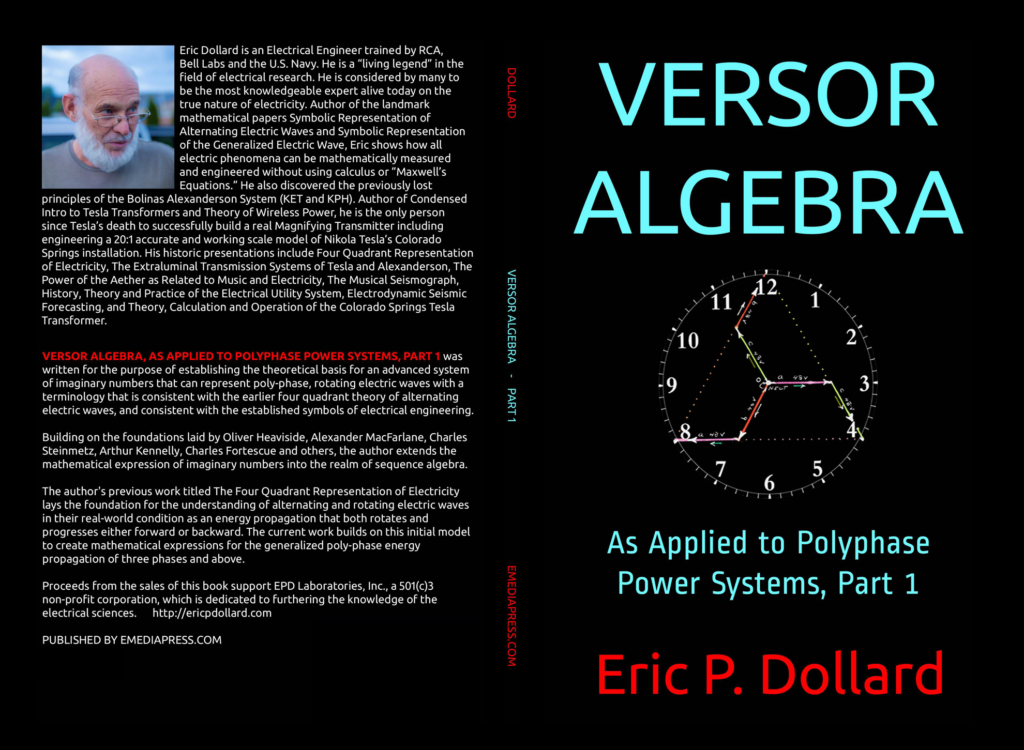

It’s taken a lot of work to get this into a paperback template, but Versor Algebra – As Applied to Polyphase Power Systems Part 1 is now on Amazon!!!
Go here: Versor Algebra
Eric Dollard’s description of the book: “Charles Proteus Steinmetz’s original math model is a natural outgrowth of Nikola Tesla’s polyphase power systems. Tesla was the discoverer, but Steinmetz was the builder who first applied Versor Algebra to the analysis of alternating current power systems.
In my presentation and book Four Quadrant Representation of Electricity, my extension of Steinmetz’s work is presented in the most simple way possible using very simple analogies, pictures and diagrams. It was a very difficult task as the goal was to facilitate an understanding for the layman.
That presentation was given at the 2013 Energy Science & Technology Conference and shortly thereafter, the book version was released, which went into more detail that was not covered in the presentation.
Tesla’s polyphase power system was originally four poles or four phases. Steinmetz is the one who adapted it into a three pole or three phase system, which is the prominent system of today. The complication is that three phase systems cannot be explained by conventional mathematics. With three phase systems, there is no plus or minus and that is the reason why the conventional math doesn’t work anymore.That left a big gap in polyphase power systems until Dr. Fortescue came up with the system of Symmetrical Coordinates. This laid the groundwork for polyphase mathematics for any number of phases. And ultimately, it can be extended into the Pythagorean understanding of numbers.The “Fortescue Method” was never fully developed because of its complexity.
The proper name for this is “Sequence Algebra” and the rudiments were presented in my presentation and book Four Quadrant Representation of Electricity.
Even though the system has become adopted for general engineering usage, Versor Algebra as Applied to Polyphase Power Systems and/or Versor Algebra Vol. II, Special Theories of Sequence Operators as Applied to Power Engineering is the first theoretical basis that has ever been presented on the subject.Versor Algebra as Applied to Polyphase Power Systems and/or Versor Algebra Vol. II, Special Theories of Sequence Operators as Applied to Power Engineering is the next logical step after Four Quandrant Representation of Electricity as it takes the reader into the mathematical journey of the mathematical model and theory that is necessary to realize the unique electrical waves that exist in polypahse power systems.
These waves are actually beyond the original understanding of Tesla and Steinmetz with regard to polyphase power systems.It is important to understand that this is all possible with simple 9th grade algebra. I take the reader through a step-by-step process from very basic algebra and log-rhythms into the more complex subject.
The process involves very simple but numerous steps to guide the reader into the understanding of polyphase mathematics.Through my own journey in writing this Versor Algebra book, I have been able to unify the polyphonic music of Bach and his contemporaries as this music follows the logic of sequence algebra perfectly.In fact, the book was written when listening to this music, which aided the process greatly.”
Get your copy here: Versor Algebra
Special thanks to Jeff Moe and Simon Davies of http://teslascientific.com for editing and formatting the book.
For Eric Dollard’s other book, which is for any engineer at any level, get Lone Pine Writings.



